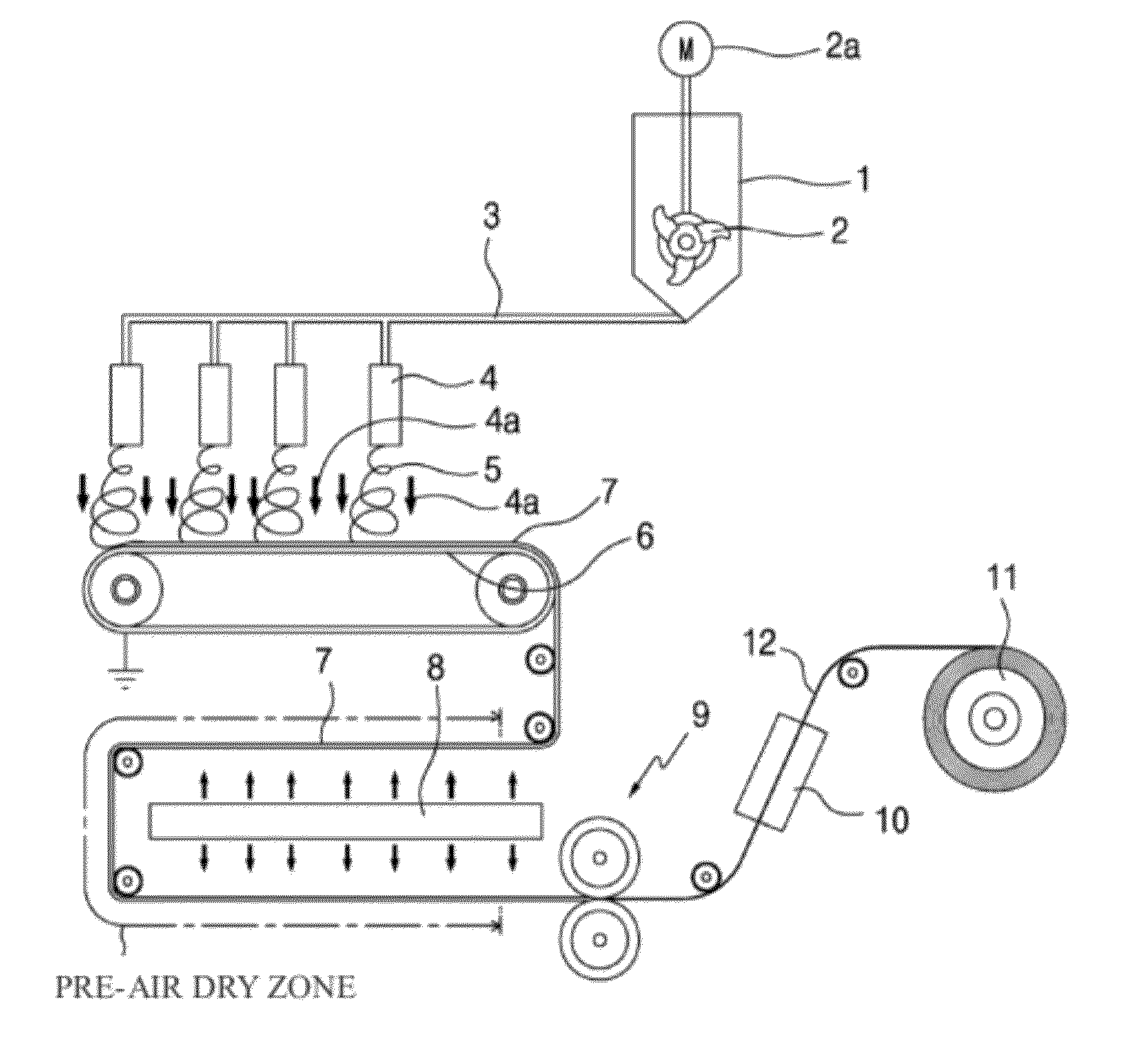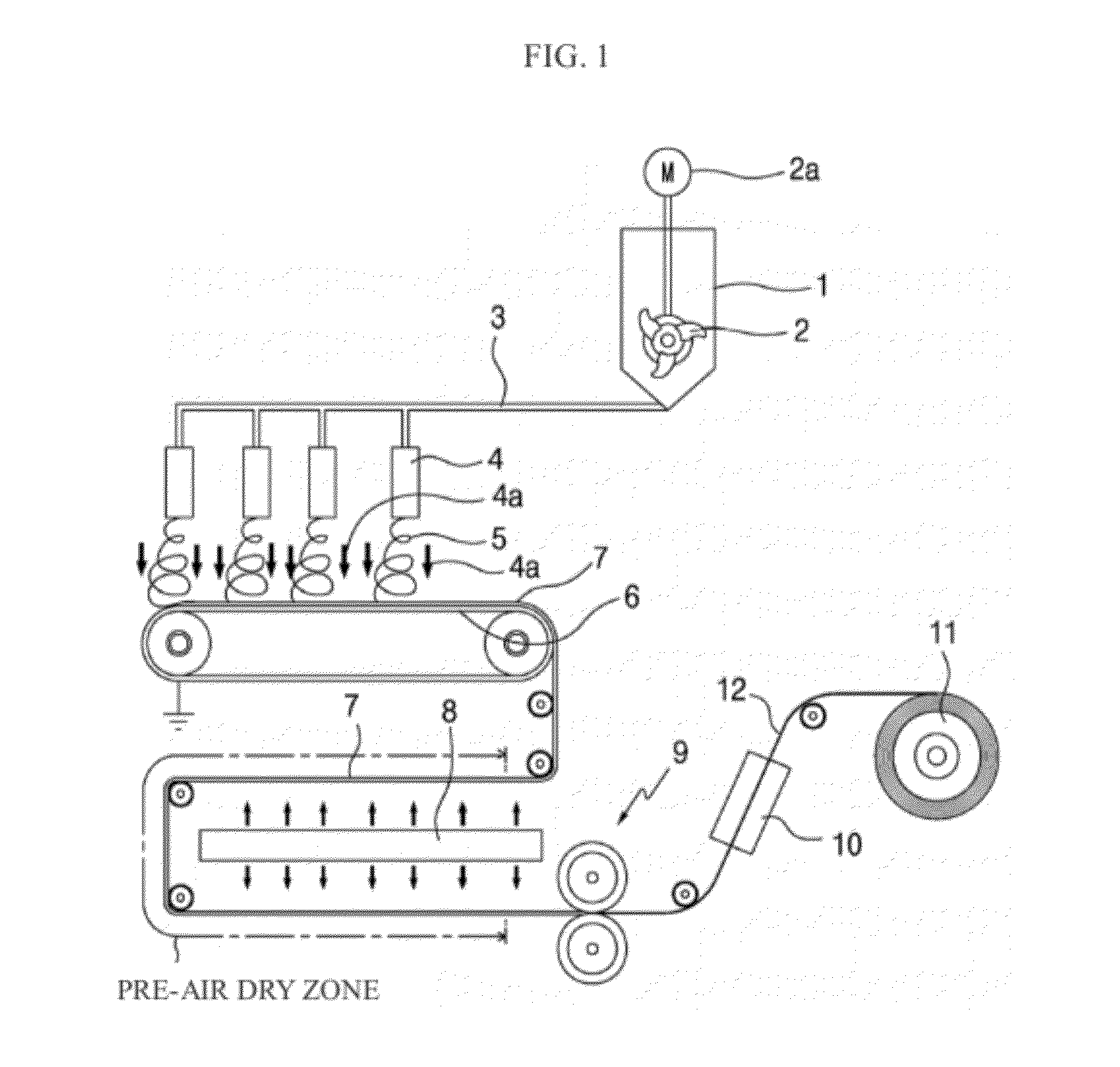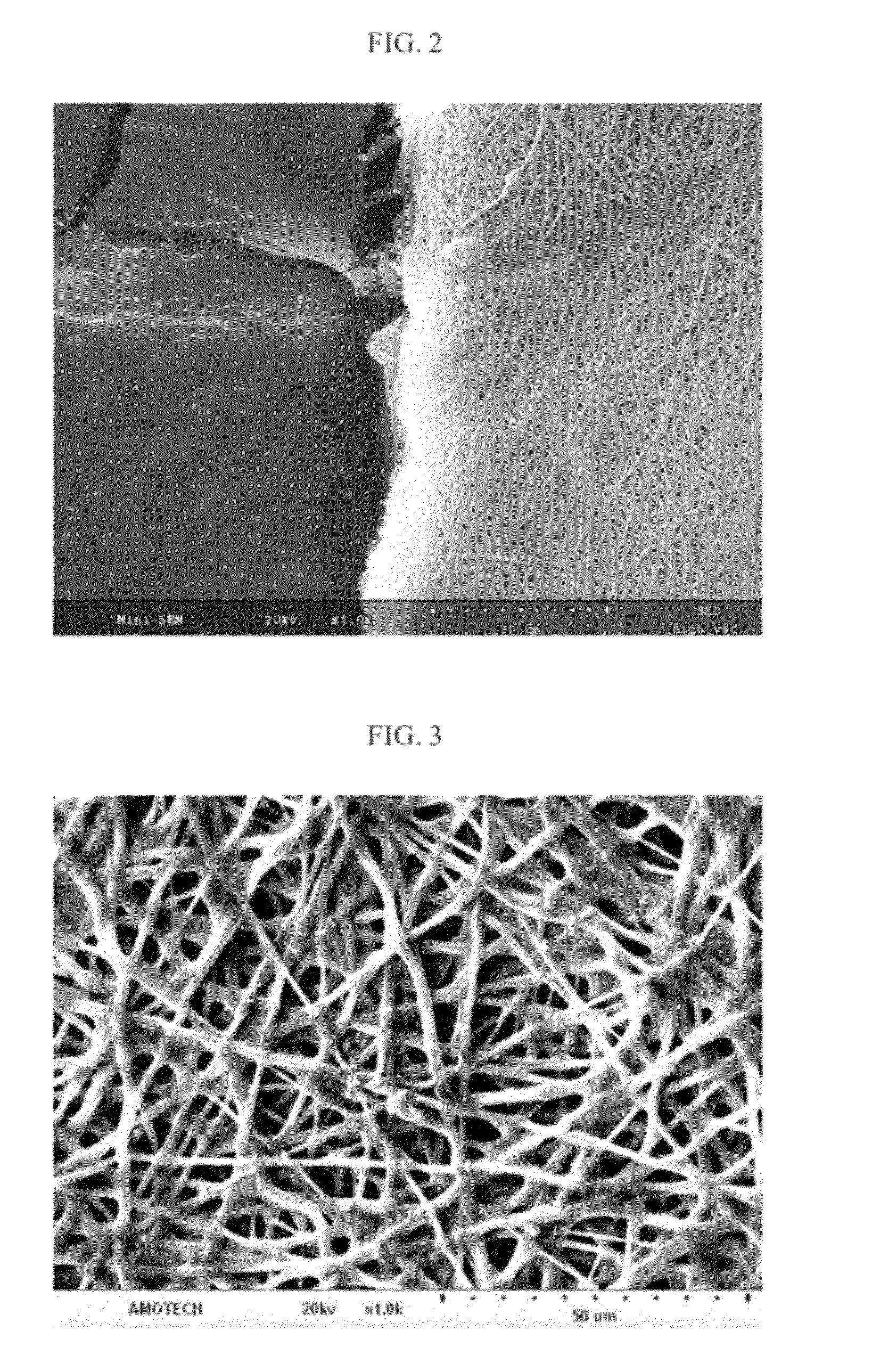Heat-resistant and high-tenacity ultrafine fibrous separation layer, method for manufacturing same, and secondary cell using same
a technology of ultrafine fibrous and separation layer, which is applied in the direction of cell components, final product manufacturing, sustainable manufacturing/processing, etc., can solve the problems of insufficient use of an existing lithium-ion secondary battery, short circuit between the anode, and the need for larger capacity of car batteries, etc., to achieve heat resistance performance, small thermal shrinkage, and excellent mechanical strength
- Summary
- Abstract
- Description
- Claims
- Application Information
AI Technical Summary
Benefits of technology
Problems solved by technology
Method used
Image
Examples
example 2
[0135]—PAN / PVdF (7 / 3) 20 wt. %—DMAc Solution
[0136]In Example 2, a separator was manufactured in the same manner as in Example 1, except that a spinning solution was prepared by changing a mixture ratio of PAN / PVdF into a weight ratio of 7:3.
[0137]In other words, polyacrylonitrile (PAN) of 7.7 g and polyvinylidene fluoride (PVdF) of 3.3 g were added to dimethylacetamide (DMAc) of 89 g, and stirred at 80° C., to thus have prepared a spinning solution made of a heat-resistant polymer and a swelling polymer.
[0138]After having manufactured the separator in the same manner as in Example 1 by using the spinning solution, various physical properties were measured and shown in Table 1.
example 3
[0154]—PES / PVdF (6 / 4) 20 wt %—DMAc / Acetone=8 / 2 Solution
[0155]In order to manufacture a separator made of heat-resistant nano-fibers by an air-electrospinning (AES) method, polyethersulfone (PES) of 12 g and polyvinylidene fluoride (PVdF) of 8 g were added to a mixed solvent of 80 g obtained by mixing dimethylacetamide (DMAc) of 64 g and acetone of 16 g, and stirred at 100° C., to thus have prepared a spinning solution made of a heat-resistant polymer and a swelling polymer.
[0156]The spinning solution consists of different phases from each other with respect to the heat-resistant polymer and the swelling polymer. Accordingly, phase separation can occur rapidly. The spinning solution was put into a mixing tank stirred using a pneumatic motor to then discharge the polymer solution by 20 ul / min / hole. Here, temperature of the spinning section was maintained at 33° C. and humidity thereof was maintained to 65%, while applying a voltage of 100 KV to a nozzle of a spin nozzle pack using a h...
example 4
[0164]—PAN / PVdF (5 / 5) 11 wt %—DMAc Solution
[0165]In order to manufacture a separator made of heat-resistant nano-fibers by an air-electrospinning (AES) method, polyacrylonitrile (PAN) of 5.5 g and polyvinylidene fluoride (PVdF) of 5.5 g were added to dimethylacetamide (DMAc) of 89, and stirred at 80° C., to thus have prepared a spinning solution made of a heat-resistant polymer and a swelling polymer.
[0166]The spinning solution consists of different phases from each other with respect to the heat-resistant polymer and the swelling polymer. Accordingly, phase separation can occur rapidly. The spinning solution was put into a mixing tank stirred using a pneumatic motor to then discharge the polymer solution by 17.5 ul / min / hole. Here, temperature of the spinning section was maintained at 33° C. and humidity thereof was maintained to 60%, while applying a voltage of 100 KV to a nozzle of a spin nozzle pack using a high voltage generator and at the same time an air pressure of 0.25 MPa t...
PUM
| Property | Measurement | Unit |
|---|---|---|
| melting point | aaaaa | aaaaa |
| thickness | aaaaa | aaaaa |
| thickness | aaaaa | aaaaa |
Abstract
Description
Claims
Application Information
 Login to View More
Login to View More - R&D
- Intellectual Property
- Life Sciences
- Materials
- Tech Scout
- Unparalleled Data Quality
- Higher Quality Content
- 60% Fewer Hallucinations
Browse by: Latest US Patents, China's latest patents, Technical Efficacy Thesaurus, Application Domain, Technology Topic, Popular Technical Reports.
© 2025 PatSnap. All rights reserved.Legal|Privacy policy|Modern Slavery Act Transparency Statement|Sitemap|About US| Contact US: help@patsnap.com



